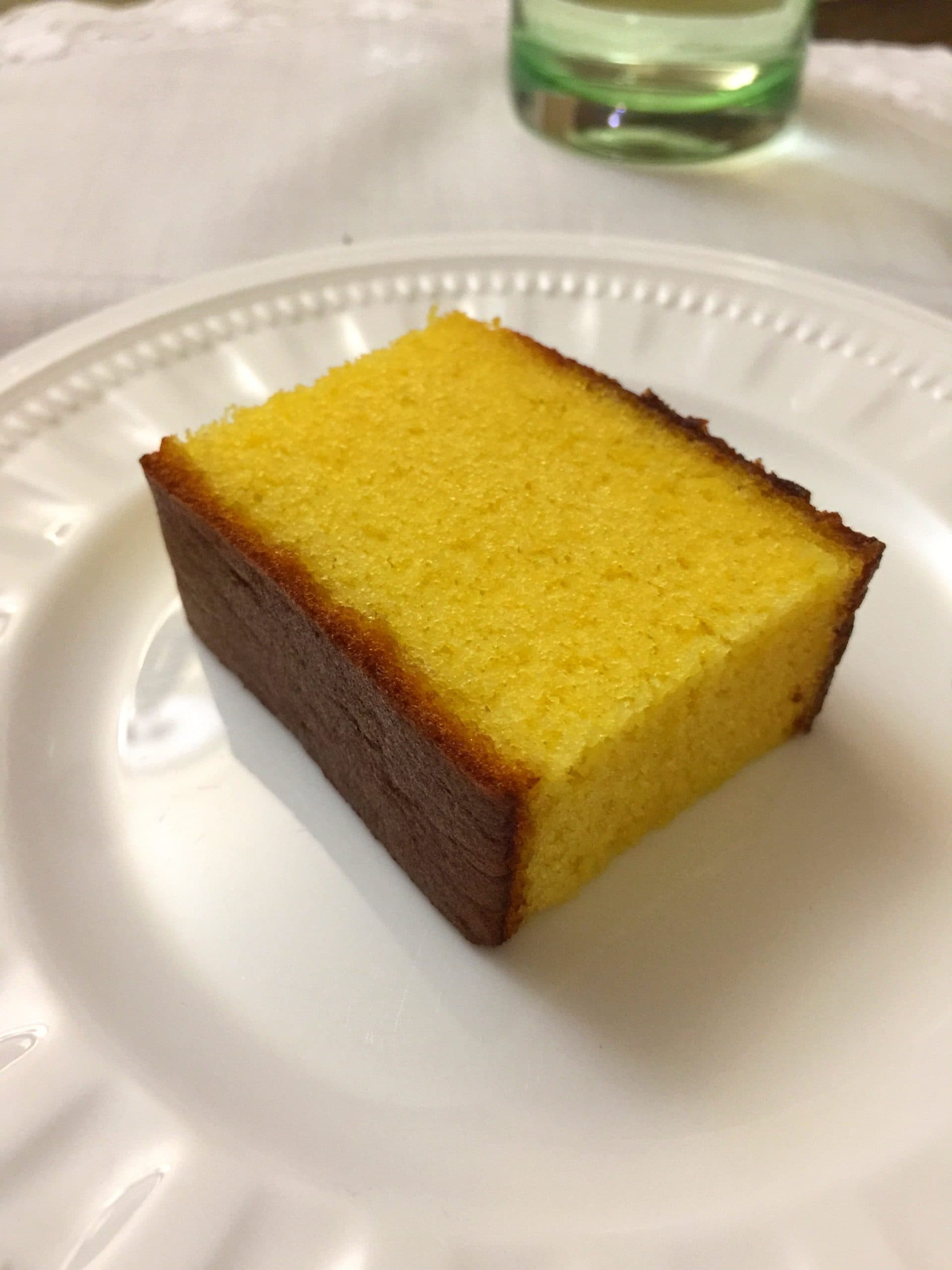
About Japan’s Beloved Kasutera.
Castella, or kasutera in Japan, is a light, yellow, sweet sponge cake that is one of the best traditional Japanese desserts in Japan. Learn the castella history and how the Portuguese first brought it to the country over 500 years ago.
Castella History – Portuguese Origins, Japanese Innovation
Nagasaki’s Introduction to Pao de Castile
The history of castella cake in Japan dates back to the 1500s when a ship carrying Portuguese monks journeying to Macau in the middle of a typhoon crashed into the Japanese port of Nagasaki. This marked the first time Europeans step foot in Japan.
The Port of Nagasaki, located in the westernmost part of Japan’s southwestern Kyushu Island, became a flourishing international trading port during the Muromachi and Azuchi-Momoyama periods in the 16th century.
It’s important to note that during the Edo period, from the 17th century to the 19th century, Japan placed a ban on international diplomacy and trade, except for with the Netherlands, China, and Korea.
Back in the 1500s, the Portuguese monks had to act as traders at the port in order to step foot into the country. So they offered what they had on the ship including their unknown cake which they called “Pao de Castile”, or bread of Castile, the Spanish kingdom at the time.
Today castella more closely resembles the traditional Portuguese sponge cake, pao de lo, which also has Castilian origins.
The History of the Ingredients in Castella Cake
When the Portuguese monks taught locals how to make the cake, it simply mixed together with eggs, flour, and sugar and baked in a Dutch oven.
It was the Portuguese who introduced refined sugar to Japan. Sugar was considered a luxury item as it was mostly imported from China. Over the next 200 years, the Dutch East India Company brought in sugar and traded it for Japanese copper and silver. In fact, 30% of their imports were sugar. By the 1700s, the Japanese certainly developed a sweet tooth.
From its introduction, castella transformed from nanban confectionary, an imported dessert from abroad, to wagashi, a traditional Japanese sweet. It was considered wagashi because of the techniques used in mixing the eggs and mostly because of its incorporation of mizuame, a local starch syrup, which gives the cake its moist and lightly chewy texture.
If you are new to castella cakes, Fukusaya is the brand to start your tasting. This shop is one of the oldest castella bakeries still operating today, as it first opened its doors in Nagasaki in 1624.
Buy your Official JR Pass and Regional Pass!
Stay connected in Japan with Pocket Wifi!
Arrive in style and convenience with Meet & Greet service!
Sign up for my newsletter on the sidebar for blog updates and my travel insider tips! And, check out my vlogs on YouTube!



